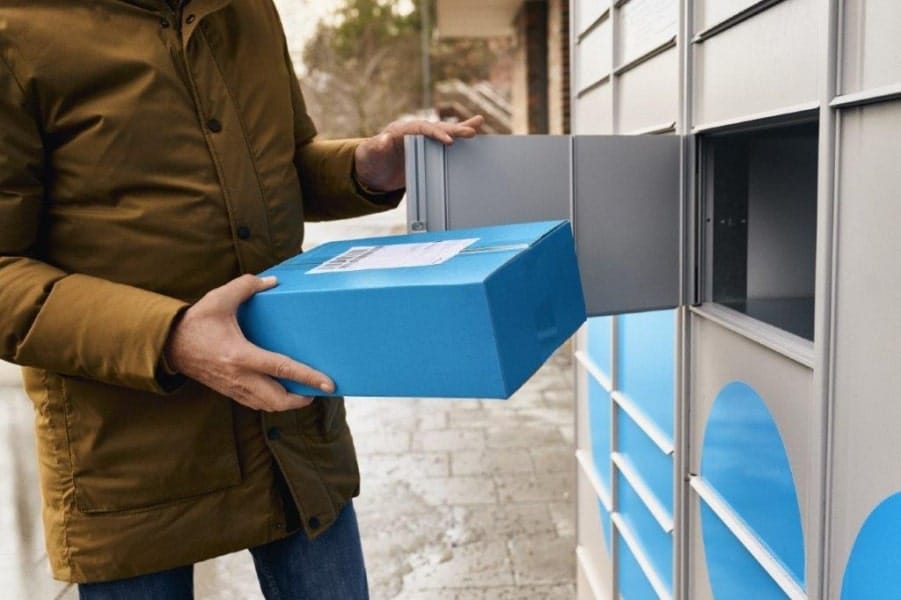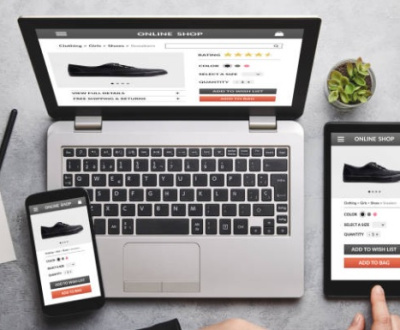
New e-commerce report from PostNord. Central banks are adjusting policies to stimulate growth, while geopolitical tensions are adding complexity to the market. The way people spend, save and shop is changing in the Nordic region. The global economy is facing uncertain times, leading central banks to lower interest rates in hope to stimulate growth. As lower interest rates ease the financial pressure, consumers will regain purchasing power, which in turn will increase consumption and drive growth. A steady recovery is expected, the Nordic economies are projected to grow around 2 percent by 2025.
During the recession, the Nordic consumers have turned to budget friendly options. An increase in cross-border shopping has created a highly price-driven and competitive market for e-commerce platforms. As the Nordic economies start to recover, it is possible that price sensitivity decreases, creating space for new trends and opportunities.
Data shows that while growth in physical stores has been slow, online sales has continued to rise across the Nordic region. As the economy strengthens, both physical and online sales are expected to follow suite, reflecting an overall recovery in consumer spending.
Swedish online shopping behavior
90 percent of the Swedish consumers have purchased physical goods online during the last 30 days. As consumers, they are on one side creatures of habit, and on the other side valuing convenience and flexibility. The most preferred delivery method is to get the parcel to a service point, which is also the most common way of receiving them. However, when asked why a certain delivery method is preferred many consumers state that the flexibility of being able to pick up parcels outside regular hours is a key factor. These aspects are closely correlated to delivery methods such as home deliveries and parcel lockers.
When it comes to payment, Swedish online consumers are drawn to methods that feel safe and that simplify the purchasing process. This has led to the widespread use of services like Swish and other forms of Mobile Pay, and different invoice solutions, which are the most preferred payment options in Sweden.
Swedish cross-border purchases
A wide range of goods and low prices attract Swedish consumers to shop from abroad. China continues to gain attraction, indicating a continuous price-focus among consumers. In the past year, 65 percent of the Swedish consumers have made purchases from abroad. China is emerging as the most favored country to shop from, followed by Germany, and Denmark. Amazon is the most popular marketplace to shop from, followed by Temu, and Zalando.
Danish online shopping behavior
81 percent of the Danish consumers have purchased physical goods online during the last 30 days. They enjoy picking up their packages at service points or having them delivered at home. They prefer picking up their parcels outside regular opening hours, which simplifies their daily routine as they can schedule it according to what suits them best. Concerning payments, most Danes prefer to use efficient and versatile payment solutions. They enjoy quick and straightforward payment options. A lot of Danes use MobilePay for everything from paying bills to splitting restaurant checks, making them a key part of the country´s ongoing transition to a cashless society. For smaller purchases, Danes prefer using MobilePay, while credit cards are favored for larger, more important transactions.
Danish cross-border purchases
Danes show a growing interest for shopping from international marketplaces such as Temu and Zalando. In fact, 80 percent of the Danish consumers have made a purchase from abroad within the past year, with China standing out as the number one destination. Of the people who ordered clothes and shoes from abroad, 52 percent chose to buy from an international retailer because of the lower prices, and 44 percent because of the unique product offerings.
Norwegian online shopping behavior
84 percent of the Norwegian consumers have purchased physical goods online during the last 30 days. Norwegian shoppers highly prioritize personal deliveries, with a strong inclination towards receiving deliveries directly to their home rather than to a service point or parcel locker; 35 percent prefer to get the delivery to their door. This allows them to obtain their parcels outside regular business hours while avoiding the need to travel outside the home. This indicate a high level of comfortability amongst Norwegians, with a taste for seamless and simple online shopping. Norwegian consumers prioritize secure and efficient payment methods, favoring credit cards and Vipps. They are also the most willing among the Nordic shoppers to pay for faster and sustainable home deliveries.
Norwegian cross-border purchases
Online marketplaces have a lot of traction in Norway, with Temu emerging as the leading platform, followed by Zalando, and Amazon. In the past year, 85 percent of the Norwegian consumers have shopped online from abroad, making them number one in the Nordics, with China as the top choice, followed by Sweden, and the United States. This reflects a consumer behavior driven by the appeal of lower prices and a broader selection of unique products, which are the most important reasons for almost half of their latest international purchases.
Finnish online shopping behavior
80 percent of the Finnish consumers have bought physical goods online during the last 30 days. In Finland, the majority of consumers prefer to get their parcels delivered to parcel lockers, in fact more than 60 percent prefers this delivery method. They enjoy the flexibility of being able to run errands whilst picking up the parcels. Various logistics providers have made large investments in the parcel locker network´s technology and scalability. Finnish consumers largely prefer and frequently use direct bank payments when shopping online. Of the consumers that prefer this solution, 58 percent do so because they are used to it. The familiarity and reliability of direct bank payments provide a sense of safety, as consumers can easily track their spending and manage their finances.
Finnish cross-border purchases
Finnish consumers choose international marketplaces because of the low prices to a greater extent than their Nordic neighbors. 74 percent have shopped online from abroad during the last year. The most popular countries to order from are Sweden and China, followed by Germany, with competitive prices and interesting product selection being the two main reasons. The top three international marketplaces for Finnish consumers are Zalando, Temu, and Amazon.

New e-commerce report from PostNord
City size impacts the online shopping behavior among Nordic consumers
An interesting finding from the report is that there are some key differences between online consumers living in larger cities and smaller communities. People living in sparsely populated areas are more driven by habit and they want their parcels to be delivered to the door. These preferences can largely be explained by the physical distances associated with rural life, as well as the often more limited range of delivery options available in smaller societies. In larger cities, flexibility is prioritized to a larger extent. However, the flexibility of being able to retrieve parcels at any time of day is the most important factor for all city types, indicating that flexibility trumps all other aspects of the delivery.
Nordic consumers from all types of cities shop online from abroad. However, the share of consumers increases with the size of the city. The share that shopped from abroad during the last month is significantly higher in large cities than in rural areas.
Most Nordic consumers have made a purchase from a marketplace during the last three months. Marketplace preferences seem to vary by city size. Amazon is popular in the larger cities. One contributing factor is the benefits of fast deliveries that come with a Prime membership; same day deliveries are often available in bigger cities. In contrast, consumers in rural areas shop more from Temu. This could be due to several factors, such as stronger emphasis on price or more limited product range in smaller cities, leading consumers to “window shop” on appealing websites instead.
Young consumers in the Nordics – pushing e-commerce forward
While Nordic consumers of all ages shop online, young consumers are the primary drivers of the development of e-commerce. They have high expectations and value different factors depending on the shopping context. Understanding their behavior is crucial for shaping the e-commerce of tomorrow. Young consumers have a higher curiosity towards newer delivery methods, whereas older consumers are more driven by habit and familiarity. Young consumers highly prioritize two things when picking up parcels: flexibility and avoiding interaction. Additionally, they are driven very little by habit, which makes them more willing to try newly established concepts such as parcel lockers. Something that also points to the young consumers ‘tendency to drive e-commerce forward is that many of them prefer mobile payments (e.g., Apple Pay, Google pay). The share that prefers this option is twice as high among young consumers as among Nordic consumers in general.
Download the full report here:
About the authors
PostNord is the leading supplier of communication and logistics solutions to, from and within the Nordic region.
AI Cyberattacks Pose Holiday Season Risks to Online Retailers












